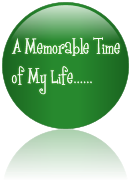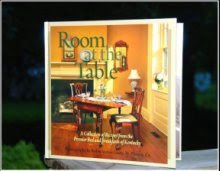Gargoyles, chameleons, serpents and swans ... turrets, towers, bays and gables ... wrought-iron fences, hand-carved doors, stained-glass windows ... hidden balconies, secluded courtyards, and secret passageways ... terra-cotta, glazed brick, tile, marble and stone ... Old Louisville is a feast for the eyes, and as such, Kentucky can boast one of the most splendid residential neighborhoods in the entire country. A leisurely stroll along the tree-lined streets of Old Louisville can transport a visitor back in time to an era when a man’s home truly was his castle.
Victorian Gothic abounds, as do shining examples of Richardsonian Romanesque, Queen Anne, Italianate, Chateauesque and Beaux Arts architecture, making Old Louisville the country’s largest Victorian neighborhood. As a National Preservation District, it ranks as the third largest only after Boston and Georgetown. The picturesque boulevards, streets and alleys of Old Louisville boast miles of grand mansions and comfortable dwellings, thousands in all, embellished with architectural styles and elements of centuries past from all corners of the globe.
Gothic abounds, as do shining examples of Richardsonian Romanesque, Queen Anne, Italianate, Chateauesque and Beaux Arts architecture, making Old Louisville the country’s largest Victorian neighborhood. As a National Preservation District, it ranks as the third largest only after Boston and Georgetown. The picturesque boulevards, streets and alleys of Old Louisville boast miles of grand mansions and comfortable dwellings, thousands in all, embellished with architectural styles and elements of centuries past from all corners of the globe.
Old Louisville has a very colorful history - mostly of local importance - and this history is kept alive and well in the many stories and anecdotes swapped in the parlors and salons of its gracious homes. First developed between the 1870s and the early 1900s, many consider the Southern Extension, as residents called it, Louisville’s first suburb. A major catalyst to its growth came in 1883 when Louisville hosted the extremely successful Southern Exposition and received international attention when then-resident Thomas Edison showcased his incandescent light bulb. When it finally closed its doors in 1887, savvy developers started to sell off the land on the newly-dubbed Saint James and Belgravia Courts, realizing that image-conscious Victorians would snatch up anything reminiscent of London aristocracy. The rich and elite poured into the posh “new” neighborhood, and residents applied the name “Old Louisville” to the district in the 1950s.
then-resident Thomas Edison showcased his incandescent light bulb. When it finally closed its doors in 1887, savvy developers started to sell off the land on the newly-dubbed Saint James and Belgravia Courts, realizing that image-conscious Victorians would snatch up anything reminiscent of London aristocracy. The rich and elite poured into the posh “new” neighborhood, and residents applied the name “Old Louisville” to the district in the 1950s.
While “Urban Renewal” caused the destruction of similar neighborhoods all around the country, most of Old Louisville somehow managed to escape the wrecking ball. After a blighted period in the 1940s, ’50s and ’60s, residents of Kentucky’s largest city started to realize that they had a diamond in the rough. Instead of giving in to the planned destruction of priceless examples of architecture, locals banded together and had the entire area placed on the National Register of Historic Places. The Old Louisville Preservation District today includes approximately 48 blocks of the residential core bounded by Kentucky and Bloom Street to the north, and between Sixth Street and Interstate 65 to the east and west.

Aside from the festive first weekend in December, Old Louisville also puts on its finery and southern charm in the springtime, just before the Kentucky Derby in May when crystal blue skies provide the perfect backdrop for a colorful explosion of azalea, dogwood and redbud blossoms. It shines in the crisp fall air of October as well, when hundreds of thousands flock to its quaint streets for the Saint James Art Show and stroll beneath a canopy of spectacular fall colors. Since the 1970s, Old Louisville has undergone an impressive renaissance, but it is still one of the “best-kept secrets” around. About 20,000 people, representing a wide spectrum of ages, incomes, races and lifestyles, make Old Louisville their home today. This diversity, as well as the beautiful, turn-of-the-century Victorian homes and friendly residents, makes Old Louisville an exciting place to live, work and play.
For more information contact:
Old Louisville Information Center
1340 South Fourth Street
Louisville, KY 40208
(502) 635-5244
olnc at bellsouth.net
ORDER TICKETS ONLINE
HOME TICKETS EVENTS ABOUT PHOTOS VOLUNTEER
Download our 2009 JPG 8.5 x 11" poster here.
Victorian
 Gothic abounds, as do shining examples of Richardsonian Romanesque, Queen Anne, Italianate, Chateauesque and Beaux Arts architecture, making Old Louisville the country’s largest Victorian neighborhood. As a National Preservation District, it ranks as the third largest only after Boston and Georgetown. The picturesque boulevards, streets and alleys of Old Louisville boast miles of grand mansions and comfortable dwellings, thousands in all, embellished with architectural styles and elements of centuries past from all corners of the globe.
Gothic abounds, as do shining examples of Richardsonian Romanesque, Queen Anne, Italianate, Chateauesque and Beaux Arts architecture, making Old Louisville the country’s largest Victorian neighborhood. As a National Preservation District, it ranks as the third largest only after Boston and Georgetown. The picturesque boulevards, streets and alleys of Old Louisville boast miles of grand mansions and comfortable dwellings, thousands in all, embellished with architectural styles and elements of centuries past from all corners of the globe.Old Louisville has a very colorful history - mostly of local importance - and this history is kept alive and well in the many stories and anecdotes swapped in the parlors and salons of its gracious homes. First developed between the 1870s and the early 1900s, many consider the Southern Extension, as residents called it, Louisville’s first suburb. A major catalyst to its growth came in 1883 when Louisville hosted the extremely successful Southern Exposition and received international attention when
 then-resident Thomas Edison showcased his incandescent light bulb. When it finally closed its doors in 1887, savvy developers started to sell off the land on the newly-dubbed Saint James and Belgravia Courts, realizing that image-conscious Victorians would snatch up anything reminiscent of London aristocracy. The rich and elite poured into the posh “new” neighborhood, and residents applied the name “Old Louisville” to the district in the 1950s.
then-resident Thomas Edison showcased his incandescent light bulb. When it finally closed its doors in 1887, savvy developers started to sell off the land on the newly-dubbed Saint James and Belgravia Courts, realizing that image-conscious Victorians would snatch up anything reminiscent of London aristocracy. The rich and elite poured into the posh “new” neighborhood, and residents applied the name “Old Louisville” to the district in the 1950s.While “Urban Renewal” caused the destruction of similar neighborhoods all around the country, most of Old Louisville somehow managed to escape the wrecking ball. After a blighted period in the 1940s, ’50s and ’60s, residents of Kentucky’s largest city started to realize that they had a diamond in the rough. Instead of giving in to the planned destruction of priceless examples of architecture, locals banded together and had the entire area placed on the National Register of Historic Places. The Old Louisville Preservation District today includes approximately 48 blocks of the residential core bounded by Kentucky and Bloom Street to the north, and between Sixth Street and Interstate 65 to the east and west.

Aside from the festive first weekend in December, Old Louisville also puts on its finery and southern charm in the springtime, just before the Kentucky Derby in May when crystal blue skies provide the perfect backdrop for a colorful explosion of azalea, dogwood and redbud blossoms. It shines in the crisp fall air of October as well, when hundreds of thousands flock to its quaint streets for the Saint James Art Show and stroll beneath a canopy of spectacular fall colors. Since the 1970s, Old Louisville has undergone an impressive renaissance, but it is still one of the “best-kept secrets” around. About 20,000 people, representing a wide spectrum of ages, incomes, races and lifestyles, make Old Louisville their home today. This diversity, as well as the beautiful, turn-of-the-century Victorian homes and friendly residents, makes Old Louisville an exciting place to live, work and play.
For more information contact:
Old Louisville Information Center
1340 South Fourth Street
Louisville, KY 40208
(502) 635-5244
olnc at bellsouth.net
ORDER TICKETS ONLINE
HOME TICKETS EVENTS ABOUT PHOTOS VOLUNTEER
Download our 2009 JPG 8.5 x 11" poster here.












 Nancy Hinchliff
Nancy Hinchliff






No comments:
Post a Comment